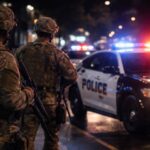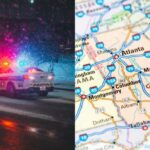The recent massacre in Las Vegas is a grim reminder of the extreme danger police officers face on a daily basis. At any moment, officers could be confronted by a criminal with a concealed firearm during a traffic stop or, as we saw on Sunday, mad men wielding high powered rifles. In instances like these, the brave men and women of America’s police departments race towards danger, bound by honor. Their focus is entirely on their duty to Serve and Protect. Unfortunately, many police officers do not have access to the equipment that could save their lives: ballistic vests for police.
Take a look at some of these startling facts about police body armor that you probably didn’t know.
Kevlar is NOT bullet-proof
The truth is that kevlar vests are only bullet-resistant. This means that no vest issued to a police officer can stop 100% of projectiles 100% of the time. As projectile resistant technology evolves, so do the means to defeat those technologies. Hollow-point, armor piercing, and high-velocity, high-density rounds all pose challenges to body armor manufacturers. And of course, more advanced protection leads to increased costs on local government.
Cost is a major factor which determines body armor accessibility
Higher quality vests come at higher prices. Generally speaking, the cost of one ballistic vest ranges from about $800- $1000. Furthermore, the lifespan of a vest depends on its price and frequency of use. According to the National Institute of Justice, which fronts the testing and standards of ballistic vests, the lifespan for the majority of vests issued to officers is only five years. As a result, many departments issue expired vests but officers may not know it until it is too late.
Ballistic vests for police: the percentage of officers wearing vests is surprisingly low
Many of us assume that most officers wear kevlar vests but that statistics tell a different story. According to the Bureau of Justice Statistics, only 65% of police departments required their officers to wear ballistic vests in 2003. Fortunately this number rose significantly by 2013 to 71%.
Further, the BJS study found that in 2013, only 54% of police departments serving 2,500 or fewer residents had mandatory vest policies in place. Of course, large departments like the NYPD have less trouble funding vests for their officers. However, small town police departments often encounter funding issues. In many cases, small-town police officers must purchase their own vests.
Local officials impact officer safety the most
Most decisions on officer vest policies fall on local sheriffs, police chiefs, and government officials. That is why electing officials who support such policies is critical for officer safety. It is important that citizens stay engaged in local government elections because your local officials have a much greater impact on police officer safety.
That is why the National Police Support Fund is dedicated to mobilizing the public behind political issues concerning police officers at all levels of government. If you believe that police officers require leaders that promote their safety, we encourage you to join our movement today.








